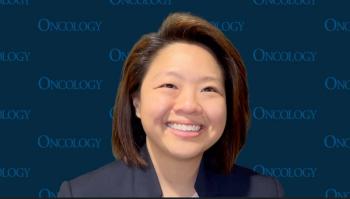
- ONCOLOGY Vol 13 No 3
- Volume 13
- Issue 3
IOM Panel Criticizes NCI Spending on Ethnic Group Research
Apanel that included top oncologists at some of the nation’s premier cancer centers criticized the National Cancer Institute(NCI) for not looking behind statistics showing that poor people and ethnic minorities have higher cancer rates in some instances. The Institute of Medicine (IOM), which is part of the National Academy of Sciences, chartered the Committee on Cancer Research Among Minorities and the Medically Underserved. Representatives from the Robert Lurie Cancer Center, Fox Chase Cancer Center, Memorial Sloan-Kettering Cancer Center, and the Stanley S. Scott Cancer Center sat on the committee, which was chaired by M. Alfred Haynes, the former president and dean of the Drew Postgraduate Medical School.
Apanel that included top oncologists at some of the nations premier cancer centers criticized the National Cancer Institute(NCI) for not looking behind statistics showing that poor people and ethnic minorities have higher cancer rates in some instances. The Institute of Medicine (IOM), which is part of the National Academy of Sciences, chartered the Committee on Cancer Research Among Minorities and the Medically Underserved. Representatives from the Robert Lurie Cancer Center, Fox Chase Cancer Center, Memorial Sloan-Kettering Cancer Center, and the Stanley S. Scott Cancer Center sat on the committee, which was chaired by M. Alfred Haynes, the former president and dean of the Drew Postgraduate Medical School.
The committee argued that there needs to be much more research into statistics showing such disparities as African-American men being disproportionately affected by prostate cancer and Asian-Americans having higher rates of stomach and liver cancer. The National Institutes of Health (NIH), which has an office on research on minority health, and the NCI, have dallied on this research, according to the IOM committee. The NCI says that it spent $124 million on research into minorities and cancer in fiscal year 1997. But the Haynes committee looked at the numbers and concluded that the NCIs outlay was more on the level of $24 million.
Articles in this issue
almost 27 years ago
WHO Declares Lymphatic Mapping to Be the Standard of Care for Melanomaalmost 27 years ago
Navelbine Increased Elderly Lung Cancer Patients’ Survivalalmost 27 years ago
Consensus Statement on Prevention and Early Diagnosis of Lung CancerNewsletter
Stay up to date on recent advances in the multidisciplinary approach to cancer.

















































































